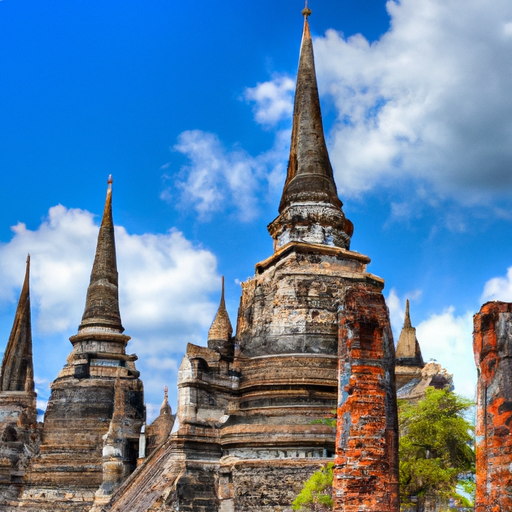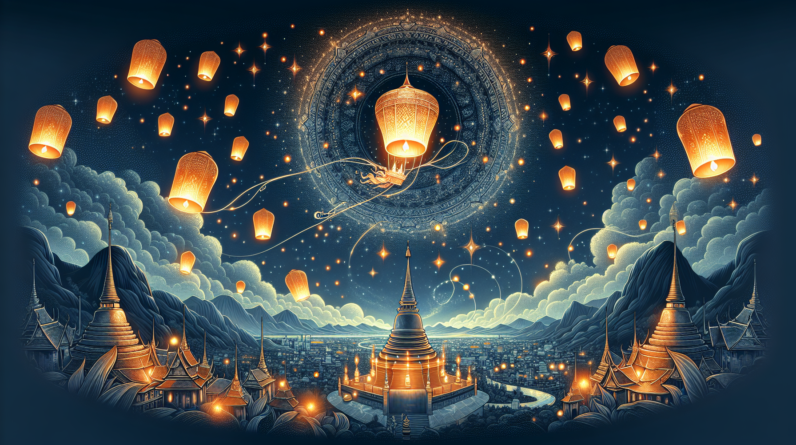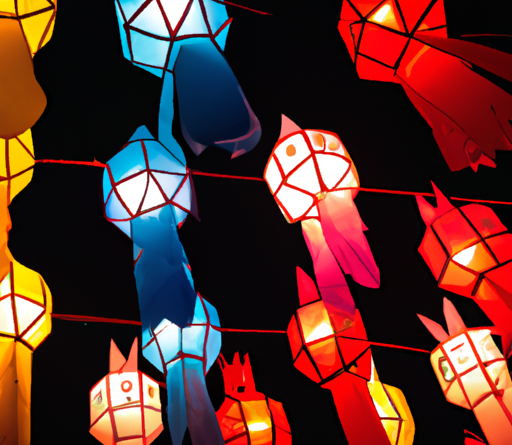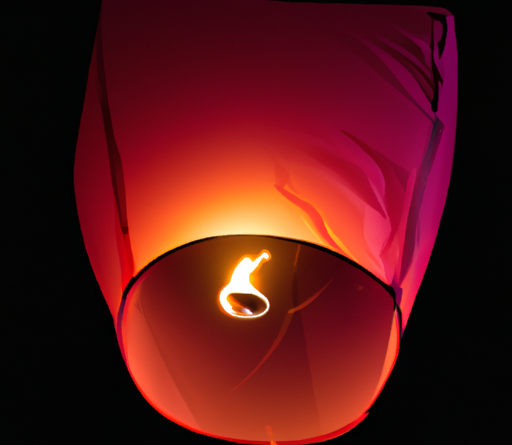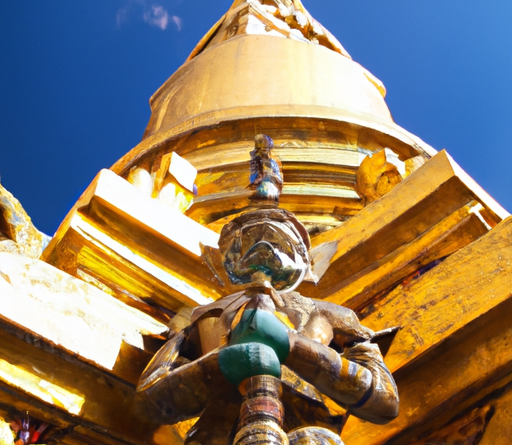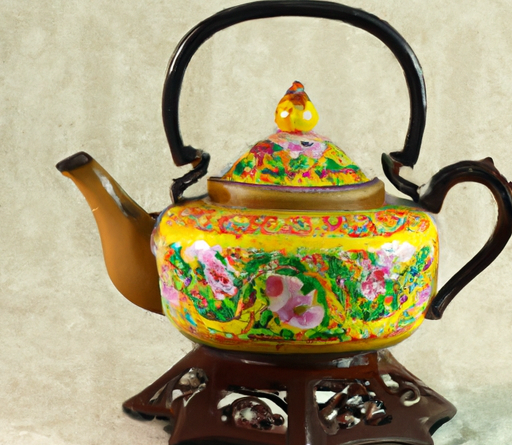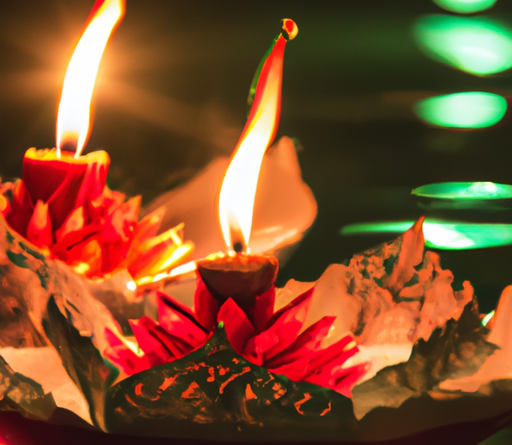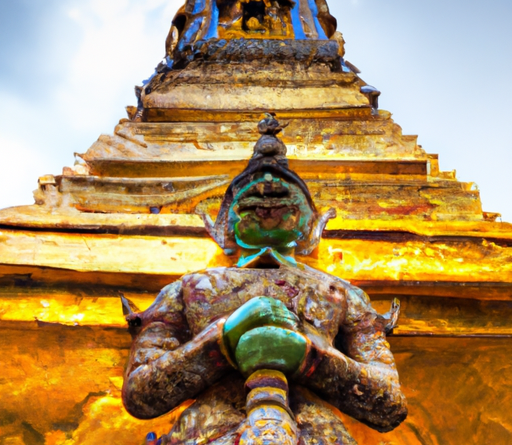
Are you ready to take a journey through time in one of Asia’s most vibrant cities? In this curated guide, we’ll be exploring Bangkok’s must-see historical landmarks that will transport you back to ancient times and unveil the rich cultural heritage of the city. From the dazzling Grand Palace to the serene Wat Arun, these iconic sites will leave you captivated by their beauty and amazed by their historical significance. So grab your camera and let’s embark on an adventure through the fascinating history of Bangkok.
The Grand Palace
Overview
As one of the most iconic landmarks in Bangkok, the Grand Palace is a must-visit destination for travelers. This sprawling complex serves as the official residence of the Kings of Thailand since its construction in 1782 and continues to be an important ceremonial and administrative site. The Grand Palace is also home to several impressive buildings, temples, and exquisite gardens, making it a true architectural marvel.
Architecture and Design
The architectural design of the Grand Palace is a testament to the rich heritage and cultural identity of Thailand. The complex showcases an extravagant fusion of Thai, European, and Chinese styles, resulting in a stunning blend of intricate details, vibrant colors, and exquisite craftsmanship. The intricate gilded details, vibrant murals, and towering spires of the various buildings within the palace complex are truly a feast for the eyes.
Highlights
While exploring the Grand Palace, be sure to visit the Temple of the Emerald Buddha, also known as Wat Phra Kaew. This sacred temple houses the revered Emerald Buddha statue, a symbol of Thailand’s religious and cultural significance. Additionally, the Chakri Maha Prasat Hall and the Dusit Maha Prasat Hall are worth visiting for their grandeur and historical significance. As you wander through the palace grounds, you’ll also come across beautiful gardens and courtyards, such as the Amarin Winitchai Hall and the Borom Phiman Mansion, which offer a peaceful escape from the bustling city. Don’t miss the opportunity to witness the Changing of the Guards ceremony, a colorful and highly choreographed event that occurs daily.
Wat Phra Kaew (Temple of the Emerald Buddha)
Overview
Located within the Grand Palace complex, the Temple of the Emerald Buddha is one of Thailand’s most revered and significant religious sites. This temple is home to the iconic Emerald Buddha statue, which is adorned with elaborate gold garments and precious jewels. The temple’s stunning architecture and intricate details make it a must-visit destination for any traveler.
History
The history of Wat Phra Kaew dates back to the 14th century when the Emerald Buddha statue was discovered in Chiang Rai. The statue has since been enshrined in various temples across Thailand before finding its permanent home at Wat Phra Kaew in the Grand Palace. The temple has undergone several renovations and expansions over the years, further adding to its historical significance.
Significance
The Emerald Buddha statue holds immense religious and cultural significance for the Thai people. It is believed to bring prosperity and good fortune to the country and its people. The statue is a precious national symbol and is highly revered by both locals and visitors alike. Its mesmerizing beauty and spiritual aura make Wat Phra Kaew a truly awe-inspiring place to visit.
Religious Art and Sculptures
Inside Wat Phra Kaew, you’ll find a magnificent collection of religious art and sculptures that reflect the rich history and cultural heritage of Thailand. The temple walls are adorned with intricate murals depicting various Buddhist stories and teachings. Elaborate golden carvings, pieces of porcelain, and precious gemstone-encrusted structures can be found throughout the temple, showcasing the skill and craftsmanship of Thai artisans.
Wat Arun (Temple of Dawn)
Overview
Perched on the banks of the Chao Phraya River, Wat Arun, also known as the Temple of Dawn, is a stunning landmark that is visible from miles away. Its distinctive prangs (towers) adorned with colorful mosaics make it one of the most recognizable temples in Bangkok. Wat Arun’s breathtaking architecture, mesmerizing riverfront location, and panoramic views make it a must-visit destination for all travelers.
Visiting Tips
To fully experience the grandeur of Wat Arun, it’s best to visit during the early morning or late afternoon when the temple is bathed in soft golden light. As the temple is located on the Thonburi side of the river, you can take a scenic riverboat ride from the central part of Bangkok to reach it, allowing you to appreciate the temple’s beauty from a unique perspective.
Architecture and Design
Wat Arun’s design is characterized by its towering prangs, which symbolize the mythical Mount Meru, the center of the universe in Buddhist cosmology. Climbing the steep steps of the central prang leads to a terrace that offers stunning views of the surrounding area, including the Chao Phraya River and the nearby Grand Palace. The intricate details of the mosaics adorning the prangs are made up of thousands of colorful Chinese porcelain fragments, creating a mesmerizing visual spectacle.
Panoramic Views
One of the highlights of visiting Wat Arun is the opportunity to enjoy panoramic views of Bangkok. Ascending the central prang allows you to take in the breathtaking sight of the Chao Phraya River and the cityscape beyond. As the sun sets, the temple and its surroundings are bathed in a warm glow, creating a truly magical atmosphere.
Wat Pho (Temple of the Reclining Buddha)
Overview
Known as the largest and oldest temple in Bangkok, Wat Pho, or the Temple of the Reclining Buddha, is a must-visit destination for those seeking cultural and historical delights. This magnificent temple complex offers a glimpse into Thailand’s rich heritage and is home to remarkable artworks, traditional Thai massage, and ancient inscriptions.
Reclining Buddha Statue
The highlight of Wat Pho is undoubtedly the awe-inspiring Reclining Buddha statue, which measures an astounding 46 meters in length and 15 meters in height. Covered in gold leaf, the statue exudes a sense of serenity and grace. The Reclining Buddha represents the passing of the Buddha into nirvana and is a significant symbol in Thai Buddhism.
Traditional Thai Massage
Wat Pho is also renowned for being the birthplace of traditional Thai massage. Within the temple complex, you’ll find a reputable massage school where visitors can experience a rejuvenating and authentic Thai massage. The traditional techniques and therapies practiced here have been passed down through generations, making it an ideal place to indulge in a moment of relaxation and wellness.
Ancient Inscriptions and Art
Wat Pho houses one of the largest collections of inscriptions and artwork in Thailand, making it a treasure trove for history enthusiasts. The temple’s walls and corridors are adorned with intricate murals depicting various Buddhist stories and teachings. The detailed craftsmanship and vibrant colors of these artworks truly showcase the skill and artistry of Thai artisans.
Jim Thompson House
Overview
The Jim Thompson House is a unique and captivating attraction in Bangkok that provides an insight into the traditional Thai silk industry, as well as the life and mysterious disappearance of its founder, Jim Thompson. This beautifully preserved house, nestled amidst a lush garden, showcases a blend of Thai and European architectural styles and is a true testament to Thompson’s passion for art and culture.
Thai Silk Industry
At the Jim Thompson House, you’ll have the opportunity to learn about Thailand’s renowned silk industry. Thompson was instrumental in reviving the Thai silk trade and bringing it to the attention of the international market. The house features a small silk museum where visitors can gain a deeper understanding of the silk-making process and admire the exquisite silk garments on display.
Architecture and Interiors
The Jim Thompson House is a remarkable example of traditional Thai architecture. The house comprises several teakwood buildings that were relocated from various parts of Thailand and reconstructed at its current location. The intricate wood carvings, ornate details, and traditional Thai motifs found throughout the house are a testament to Thompson’s appreciation for Thai craftsmanship. Inside, the house is furnished with a unique collection of antiques, art pieces, and Thompson’s personal belongings, providing a glimpse into his eclectic taste and passion for collecting.
Mystery and Disappearance
Jim Thompson’s disappearance in 1967 remains one of Thailand’s greatest unsolved mysteries. Despite intensive investigations, his whereabouts have never been discovered. This mysterious event has only added to the allure and intrigue surrounding the Jim Thompson House, making it a must-visit location for history buffs and those intrigued by unsolved mysteries.
Bangkok National Museum
Overview
The Bangkok National Museum is a treasure trove of Thai history and culture, housing an extensive collection of artifacts, artworks, and historical objects. With its vast array of exhibitions and collections, the museum offers a captivating journey through Thailand’s rich past, making it a must-visit destination for history enthusiasts and culture lovers.
Exhibitions and Collections
The museum’s diverse collection includes artifacts from various periods in Thai history, ranging from ancient artifacts to contemporary artworks. Exhibitions are organized chronologically, allowing visitors to explore the different eras and gain a deeper understanding of Thailand’s cultural heritage. From intricate sculptures and religious objects to royal regalia and archaeological finds, there is something to captivate every visitor.
Thai History and Culture
Visiting the Bangkok National Museum provides a unique opportunity to delve into Thailand’s fascinating history and culture. The exhibitions showcase the evolution of Thai art, architecture, religion, and daily life, offering insights into the country’s rich traditions and customs. From the ancient kingdoms of Sukhothai and Ayutthaya to the present-day monarchy, the museum provides a comprehensive overview of Thailand’s historical journey.
Ancient Artifacts
One of the highlights of the museum is its extensive collection of ancient artifacts. Visitors can admire intricate gold jewelry, precious ancient textiles, and rare ceramics from different regions of Thailand. Additionally, the museum houses an impressive collection of Buddhist statues and religious artifacts, each with its own historical and artistic significance.
Vimanmek Mansion
Overview
Vimanmek Mansion, also known as the Vimanmek Palace, is a magnificent teakwood building and holds the distinction of being the world’s largest teak building. This stunning royal residence, now converted into a museum, offers a glimpse into the opulent lifestyle of Thailand’s royalty in the late 19th century.
World’s Largest Teak Building
The Vimanmek Mansion is a true architectural marvel, constructed entirely from teakwood without the use of any nails. Its remarkable size and intricate design make it a unique and significant landmark in Bangkok. The mansion features over 80 rooms spread across three stories, each adorned with exquisite wood carvings and intricate detailing.
Royal Residence
Vimanmek Mansion was built as a royal residence by King Rama V in the early 20th century. The building served as a retreat for the king and his family, offering respite from the busy city life. Exploring the mansion allows visitors to step back in time and witness the lavish lifestyle of the Thai monarchy, with beautifully furnished rooms and a vast collection of royal artifacts on display.
Antique Furniture
Within the Vimanmek Mansion, you’ll find a remarkable collection of antique furniture, handicrafts, and artwork. The meticulously preserved interiors showcase the grandeur and elegance of the era, with traditional Thai and European influences. From intricately carved beds and cabinets to delicate porcelain and crystal chandeliers, every piece tells a story of the era’s opulence and exquisite craftsmanship.
Wat Saket (Golden Mount)
Overview
Perched atop a man-made hill, Wat Saket, also known as the Golden Mount, offers a serene and captivating atmosphere that allows visitors to immerse themselves in the rich history and spirituality of Thailand. This temple is a must-visit destination for its historical significance, panoramic views of Bangkok, and the majestic golden chedi (stupa) that stands at its summit.
Historical Significance
Wat Saket has played a vital role in Thai history since its construction in the late 18th century. Its initial purpose was to serve as a crematorium during the plague epidemic, and later, as a burial site for the remains of deceased individuals who could not be properly cremated. As a result, the temple has become a place of pilgrimage and remembrance for many Thais.
Panoramic Views
Climbing the 318 steps to the summit of the Golden Mount rewards visitors with breathtaking panoramic views of Bangkok’s skyline. Observing the vast cityscape with its towering buildings, bustling streets, and winding waterways provides a unique perspective on the modern metropolis. At sunset, the temple’s surroundings are bathed in a warm golden light, creating a truly magical atmosphere.
Golden Chedi
At the summit of the Golden Mount, you’ll find the temple’s iconic golden chedi. This towering structure, adorned with ornate details and colorful decorations, is a sight to behold. It houses a precious relic of Buddha and is revered by locals and visitors alike. The chedi’s golden exterior shimmers in the sunlight, creating a captivating and awe-inspiring sight.
The Democracy Monument
Overview
Standing proudly at the intersection of Ratchadamnoen Avenue and Dinso Road, the Democracy Monument serves as a symbol of Thailand’s transition to democracy and the aspirations of its people. This striking monument, with its unique architectural design and historical significance, holds a prominent place in the hearts of the Thai people.
Symbol of Democracy
The Democracy Monument was constructed in 1939 to commemorate the 1932 Siamese Revolution, which resulted in the transition from an absolute monarchy to a constitutional monarchy. The monument’s design represents the four branches of the Thai armed forces and represents the ideals of liberty, equality, and democracy. It has since become a symbol of freedom and a rallying point for political demonstrations and celebrations.
Architecture and Design
The unique and intricate design of the Democracy Monument makes it a visually captivating landmark. The central obelisk, or victory pillar, stands at the heart of the monument, representing the triumph of the revolution. Surrounding the pillar are sculptures depicting mythical creatures from Thai folklore, such as garudas and naga serpents. The monument’s architectural style blends both European and traditional Thai influences, creating an impressive and harmonious structure.
Historical Events
The Democracy Monument has witnessed numerous historical events and political movements throughout Thailand’s history. From demonstrations and protests to celebrations and rallies, the monument has served as a gathering point for the Thai people to voice their political views and assert their democratic rights. Its powerful symbolism and historical significance continue to resonate with the people of Thailand today.
Wat Benchamabophit (Marble Temple)
Overview
Also known as the Marble Temple, Wat Benchamabophit is a stunning example of Thai and European architectural fusion. This elegantly crafted temple, constructed from Carrara marble, offers visitors a serene and peaceful atmosphere to soak in the beauty of its intricate design and explore the tranquil botanical garden that surrounds it.
Unique Blend of Thai and European Styles
Wat Benchamabophit stands out from other temples in Bangkok due to its unique architectural style, which blends Thai and European elements seamlessly. The temple’s exterior showcases intricately carved white Carrara marble, while its rooftops feature traditional Thai chedis (stupas) adorned with gold. This harmonious fusion of architectural influences makes the Marble Temple a true gem of Bangkok.
Marble Architecture
The extensive use of Carrara marble throughout Wat Benchamabophit sets it apart from other temples in Thailand. The cool white marble not only adds to the temple’s grandeur but also symbolizes purity and enlightenment in Buddhism. The delicate detailing and smooth textures of the marble sculptures and carvings reveal the exquisite craftsmanship that went into creating this architectural masterpiece.
Botanical Garden
The tranquil surroundings of Wat Benchamabophit include a lush botanical garden with a variety of flora and fauna. The garden provides a peaceful escape from the noise and bustle of the city, allowing visitors to relax and appreciate the temple’s beauty in a serene setting. The sounds of chirping birds, the fragrance of flowers, and the sound of trickling water from the lotus pond create a harmonious ambiance that complements the temple’s peaceful atmosphere.
In conclusion, Bangkok’s historical landmarks offer a captivating journey through Thailand’s rich history, culture, and spirituality. From the grandeur of the Grand Palace to the serenity of Wat Saket, each landmark immerses visitors in a unique experience. Whether you’re exploring the intricate details of the temples, admiring the breathtaking architecture, or delving into the stories behind each site, Bangkok’s historical landmarks are a must-visit for anyone seeking a deeper understanding of Thailand’s cultural heritage.
